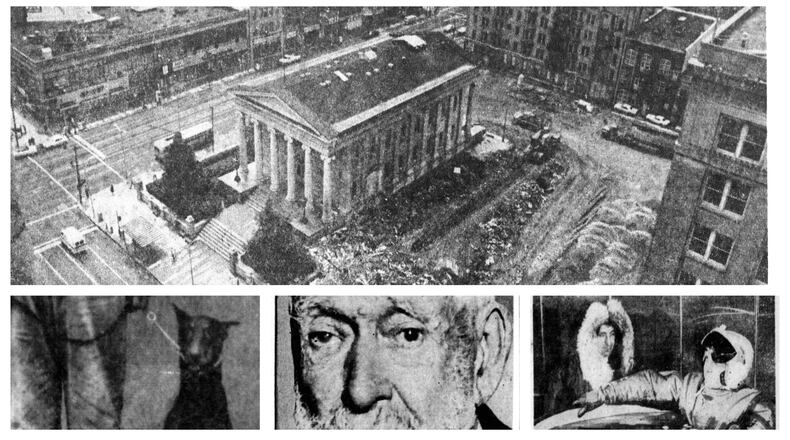Here’s a look at some stories from the week of May 19-25.
May 23, 1943: Dayton dogs serve on remote fronts
Major Eldon A. Koerner and his wife raised Doberman Pinschers in Dayton.
When duty called them to serve out of Chicago, their dogs, Vicki and Amy, were also sent off for training.
Dobermans were selected exclusively for the use by members of the Marine branch of service. The dogs were used as guards or for other important work.
The couple had hoped to keep the dogs with them, but Amy ended up joining the Marine Corp in River City, New Jersey, and Vicki, her mother, joined the Marines in the South Pacific.
Both dogs were bred. Vicki was Best of Breed at the Morris and Essex show in 1939. Amy’s father was Best of Breed at the Madison Square Garden show in New York in 1941.
The Koerners hoped to get both dogs back after the war to continue breeding their bloodlines.
“If they should fall in action,” Maj. Koerner said, “we’ll have to start all over again after the war. You can be sure that there will always be Dobermans at the Koerners’ house, and there’ll always be a ‘Vicki’ and an ‘Amy’ there, too.”
May 24, 1953: Four-way flying suit set for super-speed era
Scientists at Wright Air Development center previewed a new experimental four-way flying suit designed to protect an airman against temperature extremes when ever-faster aircraft literally get too hot to handle.
One of the biggest problems in the super-speed era, when it was expected that planes would travel at several times the speed of sound, was the searing temperatures to which man and machine must withstand.
The surface temperature of an aircraft, if it were to fly at three times the speed of sound at sea level would reach 1,000 degrees Fahrenheit.
With that being the case, pilot suits would have to “air condition” the pilot.
On the other hand, if a pilot had to bail out and land in artic waters, the suit would need to take care of that situation as well. The suit would also need to keep the pilot afloat.
The secret of the new suit was in providing a variable insulation value combined with variable permeability for ventilating air.
The next step in the development was to be devising gloves and a hood for the suit.
May 19, 1963: 17 college students spend night in jail after barbershop sit-in
Sixteen Antioch College students and one Central State student spent the night in Greene County Jail after they were arrested for “sitting-in” at Gegner’s barbershop in Yellow Springs.
A Yellow Springs resident posted the $35 bond for each, but they all elected to stay the night in jail as a protest before being released the next day.
The arrests came after the students entered the shop, and Louis Gegner, father of the shop owner, Lewis Gegner, twice punched a Black student who sat in his barber chair.
Lewis Gegner called to police claiming the group was trespassing. A spokesperson for the group said, “We were waiting in the shop for haircuts. We weren’t trespassing.”
The group, known as the Antioch committee, had been trying unsuccessfully for weeks to racially integrate the barbershop.
The barber maintained that he didn’t know how to cut the hair of a Black person and that he had won a Common Pleas Court ruling that he had a constitutional right to refuse service to Black people.
The decision was being appealed.
May 20, 1973: Old courthouse survives 93-year-old pal
For the first time in 93 years, the Old Montgomery County courthouse stood alone.
The county building was demolished by a wrecking crew. Only a pile of rubble remained.
Wreckers did not find a cornerstone and records did not show conclusively that one ever existed. Had there been one, it was probably ruined by 1913 flood waters, which reached a pretty high level on the historic building.
County commissioners were considering converting the area into a plaza, complete with a waterfall.
In later years, that plaza was indeed created, with design oversight from Virginia Kettering.
About the Author





